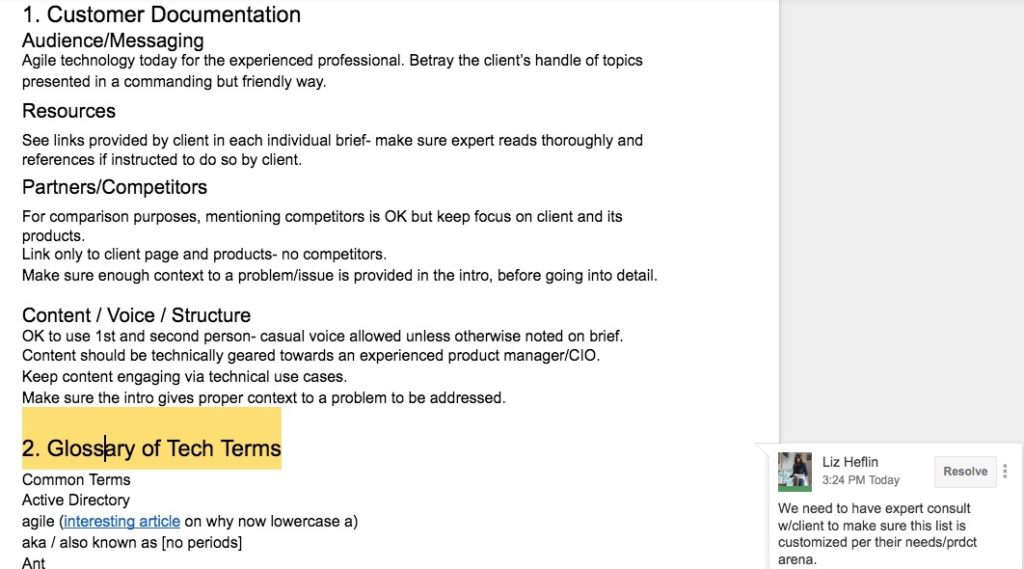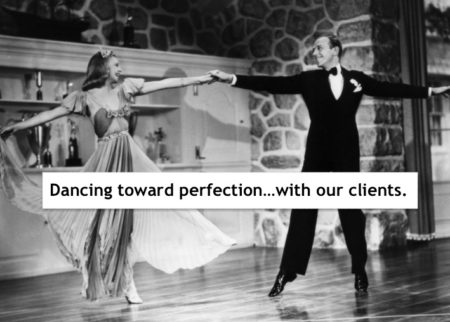By Liz Heflin, IOD Editor
In the 1937 film Shall We Dance, there’s a famous scene with Fred Astaire and Ginger Rogers sitting on a park bench quibbling over the pronunciation of different words. The duo eventually decides not to “call the whole thing off,” and proceeds to display their dreamy togetherness in a choreographed dance on roller skates through Central Park. The song (“You like tomato and I like tomahto…”) went on to become not only an Ella Fitzgerald classic, but a staple in many Hollywood movies.
The idea is that people can forget about their personal differences when they realize how much they need each other, share a mutual goal, or … are in love. That’s great, in Hollywood or in your personal life. But when it comes to creating content for our clientss, understanding differences in preference, especially when it comes to language, is critical. Sure, we could dance around those differences (or shout about them.) But, at the end of the day, while IOD always stands by its commitment to good grammar and sentence structure, we also are well aware we are creating materials that serve our clients’ needs and their specific audience. They know what they want, and it’s our job to give it to them.
It’s Personal
These requirements are often personal. Discrepancies in style preferences between one writer and another can range from using more descriptive language vs. more straightforward explanations, from a succinct, highly technical approach to a thought leadership angle. It’s also important to point out that “personal” in this context refers to two things: the company’s specific brand identity as well as the preferences of the marketing professional responsible for that brand identity.
There are various considerations over language to take into account when writing and editing content, especially with blog posts that are more technical. This includes tone, voice, the use of interjections, and slang, as well as more preferences specific to technology and products (software as a service vs. software-as-a-service). All opinions matter. Learning what those opinions are and integrating them, well, that’s a process, a process IOD takes seriously.
The Process
Almost every IOD client has a dedicated editor. One of the editor’s main responsibilities aside from simple editing, proofreading, and quality assurance is to prepare a customized style guide. This style guide grows organically. That is, the document changes as the editor gets to know the product, the company, the messaging, and the style preferences of the marketing and other professionals involved. It’s a process we have honed over the last year and improved, thanks in part to the input of our clients.
The Intake
After the first month of engagement, VP of Editorial, Jen Maidenberg, and the editor on the account have a short call with the marketing professional in charge. We discuss editorial process and the aim of the style guide. We ask for any internal materials on branding, messaging, or communications that will help us get a head start on learning the company’s preferences. These are, of course, in addition to the brief that is prepared and followed for each and every deliverable.
The Brief
When IOD is tasked with a specific assignment, the job is not just thrown haphazardly to an available writer. A detailed brief is prepared with the task’s specific parameters, client comments, voice, level of technicality, desired word count, and other measures such as SEO terms and audience if desired. It’s the expert’s job to follow the demands of the brief, and the editor’s job to make sure he or she has done so.
IOD is a content creation and research company working with some of the top names in IT.
You can be too! JOIN US.
The Writing
This is a process in and of itself, as the expert and editor work together to clarify language, correct any grammar and spelling errors, and try to hone in on the exact narrative requested by the client for this particular piece. This can involve a number of back-and-forths between the writer and editor as well as one-on-one interactions between them to fine tune the task at hand. The editor, however, is the one with the eye on personal style and preferences.
The Review
In the beginning of a relationship with a new client, the review is an integral step in better understanding style preferences. It’s a learning process that takes a few rounds for the editor to know what requests keep occurring and therefore likely require a note in the customized style guide. This is also true for industry terms, slang, and other elements such as whether or not a customer prefers many links to few links, many use cases to few use cases, etc.
The Reality
“Getting” a client does not come overnight. Typically, it takes our team a full month to two to establish a confident understanding of what the client wants in various circumstances, their range of style preferences, their list of dos and donts, and any pet peeves so that the process of creating each piece becomes a seamless endeavor with no major hiccups along the way.
The Guide
None of the above process would mean a thing were we not taking notes every step of the way. And we do. IOD prides itself on personalizing its own in-house IOD Style Guide according to all input, feedback, and concerns expressed during the process above. This guide is a work in progress and evolves along with each client’s needs, changing audience, new product cycles, etc. This is the culmination of our work during every assignment and helps make sure we get you, the client, right.


Working Towards Perfection
As the saying goes, “Nobody’s perfect.” However, in the world of marketing and professional services, you better try to be as close to perfect as possible, as quickly and reliably as possible. Faulty messaging may lead to clients losing business; and we know that may mean lost business for us as well. IOD’s success is directly tied to our partners; every word we write may help make or break the company’s image and next possible sale. And we take this seriously.
Shall We Dance?
As stated above, getting a style guide right is not an overnight event. But we continuously strive to perfect each and every one so that no one ever wants to “call the whole thing off.”
Fred and Ginger make that duet in Central Park look like a breeze despite sticking with their differences. IOD always aims to get past any differences to make sure we are always on the same page. We can’t promise a Hollywood ending—nor for that matter do we seek to be able to tap dance on roller skates. But at the end of the day, our system makes for better understanding and delivering your company’s unique style.

